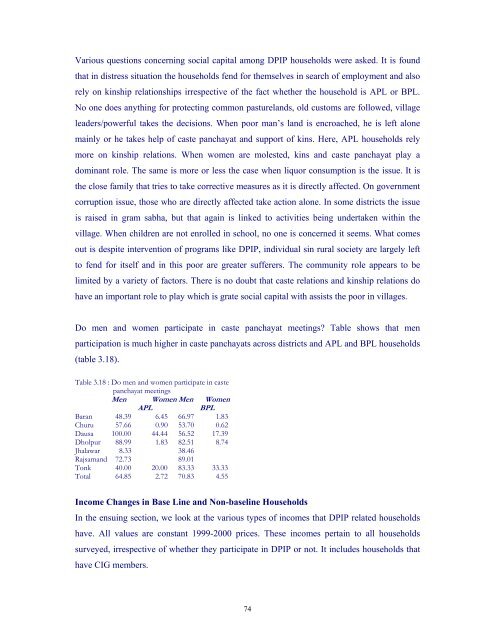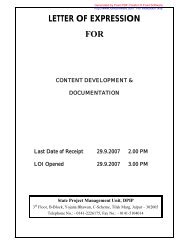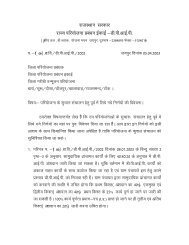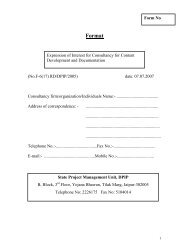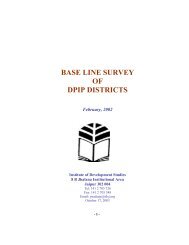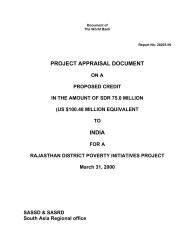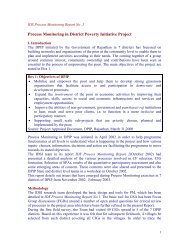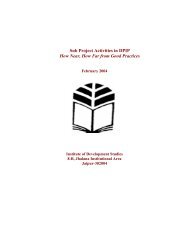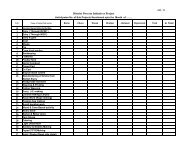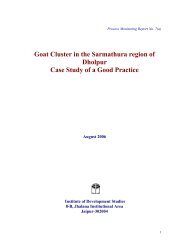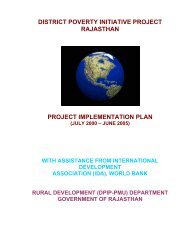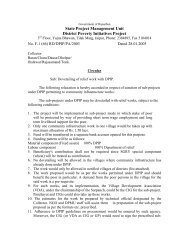Impact Assessment of the District Poverty Initiative Project Rajasthan
Impact Assessment of the District Poverty Initiative Project Rajasthan
Impact Assessment of the District Poverty Initiative Project Rajasthan
You also want an ePaper? Increase the reach of your titles
YUMPU automatically turns print PDFs into web optimized ePapers that Google loves.
Various questions concerning social capital among DPIP households were asked. It is found<br />
that in distress situation <strong>the</strong> households fend for <strong>the</strong>mselves in search <strong>of</strong> employment and also<br />
rely on kinship relationships irrespective <strong>of</strong> <strong>the</strong> fact whe<strong>the</strong>r <strong>the</strong> household is APL or BPL.<br />
No one does anything for protecting common pasturelands, old customs are followed, village<br />
leaders/powerful takes <strong>the</strong> decisions. When poor man’s land is encroached, he is left alone<br />
mainly or he takes help <strong>of</strong> caste panchayat and support <strong>of</strong> kins. Here, APL households rely<br />
more on kinship relations. When women are molested, kins and caste panchayat play a<br />
dominant role. The same is more or less <strong>the</strong> case when liquor consumption is <strong>the</strong> issue. It is<br />
<strong>the</strong> close family that tries to take corrective measures as it is directly affected. On government<br />
corruption issue, those who are directly affected take action alone. In some districts <strong>the</strong> issue<br />
is raised in gram sabha, but that again is linked to activities being undertaken within <strong>the</strong><br />
village. When children are not enrolled in school, no one is concerned it seems. What comes<br />
out is despite intervention <strong>of</strong> programs like DPIP, individual sin rural society are largely left<br />
to fend for itself and in this poor are greater sufferers. The community role appears to be<br />
limited by a variety <strong>of</strong> factors. There is no doubt that caste relations and kinship relations do<br />
have an important role to play which is grate social capital with assists <strong>the</strong> poor in villages.<br />
Do men and women participate in caste panchayat meetings Table shows that men<br />
participation is much higher in caste panchayats across districts and APL and BPL households<br />
(table 3.18).<br />
Table 3.18 : Do men and women participate in caste<br />
panchayat meetings<br />
Men Women Men Women<br />
APL<br />
BPL<br />
Baran 48.39 6.45 66.97 1.83<br />
Churu 57.66 0.90 53.70 0.62<br />
Dausa 100.00 44.44 56.52 17.39<br />
Dholpur 88.99 1.83 82.51 8.74<br />
Jhalawar 8.33 38.46<br />
Rajsamand 72.73 89.01<br />
Tonk 40.00 20.00 83.33 33.33<br />
Total 64.85 2.72 70.83 4.55<br />
Income Changes in Base Line and Non-baseline Households<br />
In <strong>the</strong> ensuing section, we look at <strong>the</strong> various types <strong>of</strong> incomes that DPIP related households<br />
have. All values are constant 1999-2000 prices. These incomes pertain to all households<br />
surveyed, irrespective <strong>of</strong> whe<strong>the</strong>r <strong>the</strong>y participate in DPIP or not. It includes households that<br />
have CIG members.<br />
74


